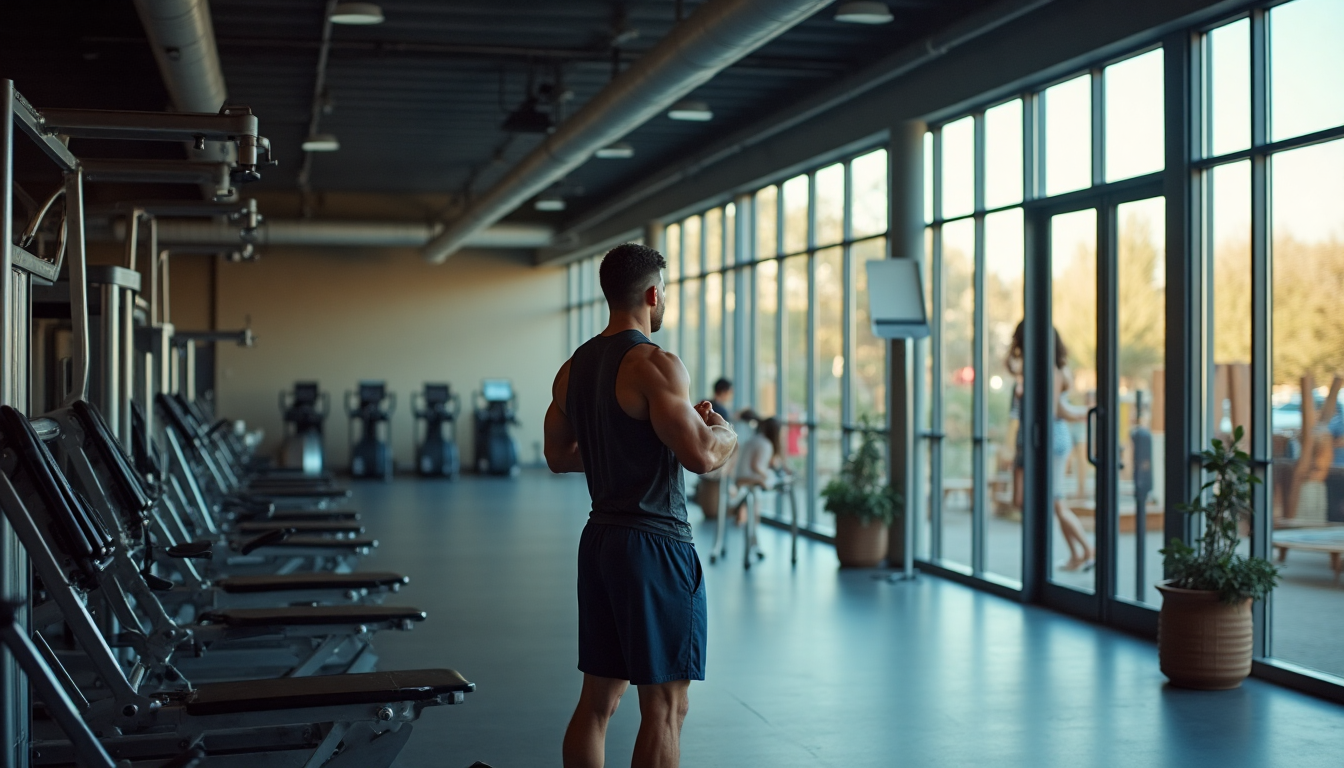Your Gym is Making You Weaker

Last week, I watched my 4-year-old nephew navigate a playground with the grace of a ninja and the fearlessness of someone who's never heard of liability insurance. He climbed, crawled under things, jumped between platforms, carried his stuffed dinosaur while scaling a rope net, and somehow made it look effortless.
Then I hit the gym that evening and watched grown adults stand in lines to use machines that move in exactly one plane of motion.
Something's seriously wrong with this picture.
The Fundamental Movement Trap
Look, I'm not here to trash Dan John or the concept of fundamental movement patterns. The squat, hip hinge, push, pull, and loaded carry framework has helped countless people build strength and organize their training. It's solid stuff.
But here's what nobody talks about: these patterns were never meant to be a ceiling. They were supposed to be a foundation.
Yet somehow, we've turned them into dogma. Walk into any gym and you'll see the same ritual playing out—people moving barbells up and down in perfectly controlled environments, hitting their macros, tracking their numbers, and wondering why they feel like athletes but move like robots.
The problem isn't the movements themselves. It's that we've stripped away everything that makes movement actually useful.
When Did We Stop Being Human?
Think about it: when was the last time you needed to stand up from a chair exactly 10 times with perfect form and precise rest intervals? I'll wait.
Now when was the last time you had to:
- Chase your dog who slipped his leash
- Help a friend move furniture up two flights of stairs
- Rescue a frisbee from a tree
- Pick up a crying toddler while carrying groceries
These situations don't care about your bench press max or your perfect squat depth. They demand something different: the ability to apply strength while your body is moving through space, often unpredictably, usually under some kind of time pressure.
Our ancestors didn't have rest days between throwing spears and climbing trees. They certainly didn't have "leg day" and "arm day." They had "survive day," and it required everything working together, all the time.
The Playground Hypothesis
Here's my theory: the best training template ever created isn't found in any fitness book. It's your local playground.
Watch kids play for an hour and you'll see more creative movement solutions than most trainers learn in their entire certification courses. They're constantly:
- Combining upper and lower body movements
- Changing directions without warning
- Carrying objects while moving
- Problem-solving through physical challenges
- Using their environment as equipment
And they do it all with genuine enthusiasm, not because someone told them it would improve their "functional movement screen" scores.
Breaking Free from the Box
So how do we escape the fundamental movement pattern prison? We start thinking like humans instead of machines.
Instead of doing your usual squat sets, what if you spent that time doing bear crawls across the parking lot? Or pushing your car (with the parking brake released, obviously—I'm rebellious, not stupid)?
Rather than another rowing session, why not find a rope and actually climb something? Or better yet, drag a tire around your neighborhood. Yeah, people will stare. Let them.
The magic happens when you stop asking "What muscles does this work?" and start asking "What problem does this solve?"
Real Movement for Real Life
Here's what I've been experimenting with, and what I challenge my clients to try:
Replace static squats with dynamic power: Sprint intervals, box jumps, or sled pushes. Your legs were designed to propel you through space, not just move weight up and down.
Swap isolation pulls for integrated climbing: Rope climbs, tree climbing, or even jungle gym exploration. Your grip strength will skyrocket, and you'll rediscover muscles you forgot you had.
Trade pressing patterns for throwing and pushing: Medicine ball throws, heavy bag work, or pushing loaded sleds. You'll build explosive power that actually transfers to real-world scenarios.
Upgrade carries to chaos: Instead of walking in straight lines with perfectly balanced weights, try carrying awkward objects up hills, around obstacles, or while changing directions. Rocks, sandbags, even willing (and brave) friends work great.
And here's the kicker—most of this stuff is more fun than your regular gym routine. When's the last time you left the gym actually excited about what you just did?
But Marcus, What About Progressive Overload?
I can hear the exercise science majors sharpening their pitchforks already. "You can't progressively overload tree climbing! Where's the periodization in playground workouts?"
Fair points, but you're thinking too small.
Progressive overload doesn't just mean adding weight to a bar. It can mean:
- Climbing higher or more challenging routes
- Carrying heavier or more awkward objects
- Moving faster over the same distance
- Adding complexity to existing movements
- Improving movement quality under fatigue
The human body loves novel challenges. Give it something new to figure out, and it will adapt in ways that surprised even the science nerds.
The Specificity Trap
Here's another objection I hear: "But my sport requires specific movements!"
True. If you're a powerlifter, you need to squat, bench, and deadlift heavy weights. If you're a swimmer, you need pool time.
But unless you're competing at an elite level, spending 100% of your training time on sport-specific movements is like eating nothing but protein powder because you need protein to build muscle.
Even elite athletes use movement variability in their training. Why? Because the human body thrives on diverse movement inputs. The stronger and more adaptable your movement foundation, the better you'll perform when it matters.
Start Small, Think Big
Look, I'm not saying you need to abandon your current program and live in the woods (though honestly, that sounds pretty appealing some days).
Start with one session per week. Pick one "fundamental movement" and find a way to make it more chaotic, more environmental, more human.
Maybe that's doing your pressing work with odd objects instead of barbells. Maybe it's replacing your cool-down with an actual walk outside instead of five minutes on a stationary bike.
Or here's a wild idea: find a playground and spend 20 minutes just moving around it. Try to get from point A to point B using only your hands. See how long you can hang from the monkey bars. Race yourself through an obstacle course you create.
I guarantee you'll discover weaknesses you never knew you had and strengths you'd forgotten about.
The Environment as Your Co-Coach
Here's what really gets me excited about this approach: the environment becomes part of your training program.
A traditional gym is predictable. The floor is flat, the weights are balanced, the temperature is controlled. You can zone out, go through the motions, and still complete your workout.
But train outside, work with odd objects, move through varied terrain? Now you need to stay present. You have to adapt, react, problem-solve. Your nervous system gets a workout along with your muscles.
That's not just better training—it's better living.
The Real Test
Want to know if your training is actually functional? Don't look at your numbers. Look at your life.
Can you help friends move without throwing out your back? Can you play with kids without getting winded? Can you navigate airport terminals with luggage without feeling like you need a recovery day?
Can you move through the world with confidence, knowing your body is capable of handling whatever weird physical challenge life throws at you?
That's the real test of fitness. Not whether you can squat your bodyweight, but whether you can live your life without your body being the limiting factor.
Your Mission, Should You Choose to Accept It
I'm going to leave you with a challenge. This week, identify one movement pattern you normally train in the gym and find a way to do it in the real world instead.
Maybe you swap your usual deadlift session for moving furniture or stacking firewood. Perhaps you replace pull-ups with actual climbing. Or you could ditch the treadmill for some hill sprints while carrying something heavy.
Document how it feels different. Notice what muscles get worked that usually don't. Pay attention to how your brain has to engage differently.
Then come back and tell me the gym isn't making you weaker.
Because here's the truth: your body doesn't want to be strong just in the gym. It wants to be strong everywhere, in every situation, under any condition.
Time to start training like it.
What's one "fundamental movement" you could take outside the gym this week? Let me know in the comments—I'm always looking for new ways to make fitness more human.




